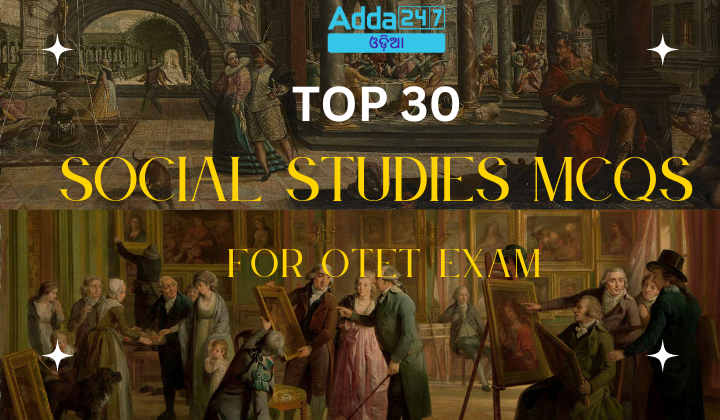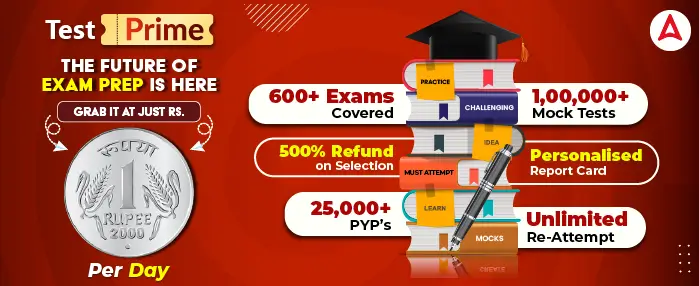Preparing for the OTET exam can be streamlined by focusing on key areas within Social Studies, such as History, Political Science, and Geography. These 30 multiple-choice questions cover crucial topics like the historical periods of the Sultanate, Mughal, and British rule, key figures and events in Indian nationalism, the structure and provisions of the Indian Constitution, and the physical and cultural geography of Odisha. By mastering these questions, candidates can enhance their understanding and increase their chances of success in the OTET exam.
Top 30 Social Studies MCQS For OTET Exam
- What is one of the primary purposes of social science education in Indian schools?
(a) To memorize historical dates
(b) To develop critical thinking and analytical skills
(c) To prepare students for physical education
(d) To promote memorization techniques
Ans: (b) - Social science education aims to provide students with knowledge about:
(a) Scientific experiments
(b) Historical development, geographical features, political systems, economic structures, and social institutions
(c) Mathematical theories
(d) Computer programming
Ans: (b) - Which of the following subjects is NOT typically covered in social science education in Indian schools?
(a) History
(b) Geography
(c) Physics
(d) Civics
Ans: (c) - How does social science education in Indian schools help in cultural awareness?
(a) By teaching students only about Indian culture
(b) By encouraging students to appreciate the diversity of Indian culture and heritage, as well as the cultures of other countries
(c) By focusing solely on religious studies
(d) By promoting only modern cultural practices
Ans: (b) - What role does social science education play in citizenship and civic engagement?
(a) It teaches students only about ancient civilizations
(b) It fosters active and responsible citizenship and familiarizes students with democracy, human rights, and social justice
(c) It focuses on personal finance management
(d) It prepares students for competitive sports
Ans: (b) - Social science education nurtures critical thinking by:
(a) Teaching students to memorize facts
(b) Encouraging students to analyze information, evaluate evidence, and form reasoned judgments
(c) Focusing on repetitive learning methods
(d) Avoiding controversial topics
Ans: (b) - Which social issues are students exposed to through social science education in Indian schools?
(a) Only local community issues
(b) Poverty, inequality, environmental degradation, gender discrimination, and globalization
(c) Only historical conflicts
(d) Sports and entertainment news
Ans: (b) - How does social science education empower students regarding social issues?
(a) By keeping them unaware of contemporary challenges
(b) By helping them develop an awareness of social issues and empowering them to become agents of positive change
(c) By discouraging discussions on social issues
(d) By focusing exclusively on academic success
Ans: (b) - In what ways does social science education prepare students for their careers?
(a) By focusing only on technical skills
(b) By providing a foundation for careers in law, politics, journalism, international relations, social work, education, and research
(c) By training them for specific jobs in the IT sector
(d) By emphasizing physical fitness and sports
Ans: (b) - Which skill is NOT typically developed through social science education in Indian schools?
(a) Research skills
(b) Communication skills
(c) Mathematical computation
(d) Ability to work with diverse groups of people
Ans: (c) - Which European travelers provided significant information on the socio-economic conditions of India during the Mughal period?
(a) Portuguese
(b) Dutch
(c) British
(d) All of the above
Ans. (d) All of the above - Who among the following mentioned that people in the Deccan were barefooted due to the high cost of leather?
(a) Ibn Battuta
(b) Al-Biruni
(c) Marco Polo
(d) Nikitin
Ans. (d) Nikitin - Which new crops were introduced to India during the seventeenth century?
(a) Tobacco and maize
(b) Sugarcane and cotton
(c) Indigo and oil-seeds
(d) Barley and gram
Ans. (a) Tobacco and maize - Who were the local traders in Mughal India?
(a) Banjaras
(b) Banik
(c) Seth and Bohra
(d) Marwaris
Ans. (b) Banik - Which trading community was prominent on the Coramandal coast during the Mughal period?
(a) Marwaris
(b) Chettis
(c) Bohra
(d) Banjaras
Ans. (b) Chettis - The Buland Darwaza at Fatehpur Sikri was built to commemorate which event?
(a) Akbar’s victory over Gujarat
(b) Completion of the Taj Mahal
(c) Jahangir’s coronation
(d) Construction of the Red Fort
Ans. (a) Akbar’s victory over Gujarat - What was the main construction material used for the Moti Masjid at Agra?
(a) Red sandstone
(b) Granite
(c) White marble
(d) Limestone
Ans. (c) White marble - Who among the following Mughal rulers commissioned the illustrations of literary and religious texts and established an art studio?
(a) Babur
(b) Akbar
(c) Shah Jahan
(d) Aurangzeb
Ans. (b) Akbar - Which Persian work, translated by Dara Shikoh, includes important Indian religious texts?
(a) Ain-i-Akbari
(b) Tuzuk-i-Jahangiri
(c) Padshah Nama
(d) Upanishads
Ans. (d) Upanishads - Who was the most influential Hindi poet of the Mughal period, known for writing the Ramcharitmanas?
(a) Kabir
(b) Surdas
(c) Tulsidas
(d) Mirabai
Ans. (c) Tulsidas - The British Parliamentary system inspired which of the following features in the Indian Constitution?
(a) Bicameral legislature
(b) Federal structure
(c) Directive Principles of State Policy
(d) Preamble
Ans. (a) Bicameral legislature - The Constitutional Head of State in the Indian parliamentary system is:
(a) Prime Minister
(b) President
(c) Speaker
(d) Chief Justice
Ans. (b) President - In the context of the Indian Parliament, the Lower House is more powerful than the Upper House in matters of:
(a) Amending the Constitution
(b) Control over the executive
(c) Electing the President
(d) Ratifying international treaties
Ans. (b) Control over the executive - The Council of Ministers in India is responsible to:
(a) The President
(b) The Parliament
(c) The Prime Minister
(d) The Supreme Court
Ans. (b) The Parliament - Which of the following demonstrates the prevalence of the rule of law in India?
(a) The supremacy of the judiciary
(b) The provision of Fundamental Rights
(c) The existence of the Preamble
(d) The independence of the executive
Ans. (a) The supremacy of the judiciary - The Preamble to the Indian Constitution is inspired by the Constitution of:
(a) Canada
(b) Ireland
(c) USA
(d) Australia
Ans. (c) USA - Fundamental Rights in the Indian Constitution are inspired by:
(a) British Constitution
(b) Weimar Constitution of Germany
(c) US Constitution
(d) Irish Constitution
Ans. (c) US Constitution - The functions of the Vice-President of India resemble those of the Vice-President of:
(a) Canada
(b) South Africa
(c) Australia
(d) USA
Ans. (d) USA - The method of amending the Indian Constitution has been inspired by the Constitution of:
(a) Canada
(b) South Africa
(c) USA
(d) Ireland
Ans. (b) South Africa - The procedure for solving deadlocks over concurrent subjects between the Centre and the States in India is similar to that of:
(a) USA
(b) Canada
(c) Australia
(d) South Africa
Ans. (c) Australia








